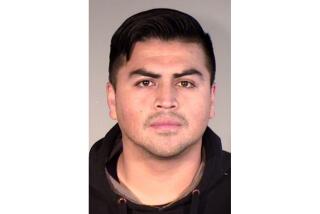Tallying church abuse
During the last few years we have heard many heart-rending stories from those who have been abused by Catholic priests, religious brothers and sisters and lay employees of the church. Their stories have been difficult for them to tell, and for their families and the entire Catholic community to hear.
As coordinator of the Victims Assistance Ministry of the Archdiocese of Los Angeles, I have been privileged to walk with many of these victims, to listen to their stories, to offer support and counseling and to be available to them when needed. Understandably, many victims never spoke of their abuse, even to their own families. Only as adults have many been able to come forward to share what has burdened them for several decades.
The graph below, put together by the archdiocese, charts the years during which 254 perpetrators were alleged to have victimized the 553 people involved in the civil cases in the Archdiocese of Los Angeles. If a perpetrator abused a victim over several years, there is a box for each of those years. Most of these incidents were reported for the first time as a result of lawsuits filed in 2003. Each box represents a tragedy and a betrayal of trust. For obvious reasons, no chart could ever fully represent all cases of abuse. However, this chart is important for a number of reasons.
The graph shows that most of the abuse was clustered from the late 1950s to the early 1980s. The U.S. Catholic bishops have commissioned a study on the causes and context of abuse in the church to shed light on why incidents of abuse peaked during this period.
By the mid-1980s, however, the graph shows that incidents drop off dramatically. For instance, while there were 49 offenders who abused victims in 1981, that number dropped to 11 in 1991, and there were none in 2001.
Why did the cases of abuse drop off in the mid-1980s? Beginning with the first published policies and procedures regarding clergy abuse in 1987, the archdiocese enacted ever more effective methods for dealing with claims of abuse by its priests, religious brothers and sisters and lay employees. These efforts included norms for appropriate behavior with children and young people, as well as the permanent removal from ministry of those found to have committed abuse.
As the causes and warning signs of abusive behavior became better understood by society and the church, the archdiocese implemented preventive training programs for priests, teachers, other lay employees, volunteers and children. Fingerprinting and criminal background checks were required for seminarians, priests, lay employees and volunteers.
And, learning from the experience of many adult victims who suffered for decades in silence, the archdiocese placed greater emphasis on creating an atmosphere of openness in all of our parishes and schools. Children and young people are trained how to speak out about uncomfortable situations, and are told that they will be listened to and believed.
We must remain vigilant in our efforts to protect children, because the compulsion that drives molesters to abuse children is strong. But I am confident that the steps to prevent abuse taken in this archdiocese since the mid-1980s have resulted in a safer environment for all of our children and young people.
Sister Sheila McNiff is the coordinator of the Victims Assistance Ministry of the Archdiocese of Los Angeles.
More to Read
Sign up for Essential California
The most important California stories and recommendations in your inbox every morning.
You may occasionally receive promotional content from the Los Angeles Times.










